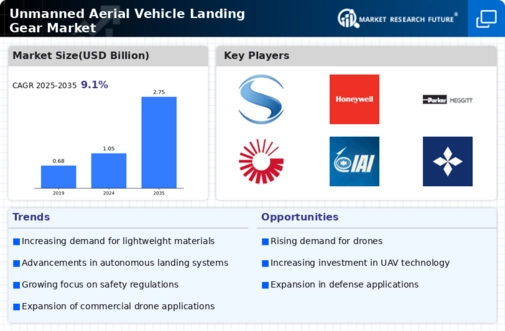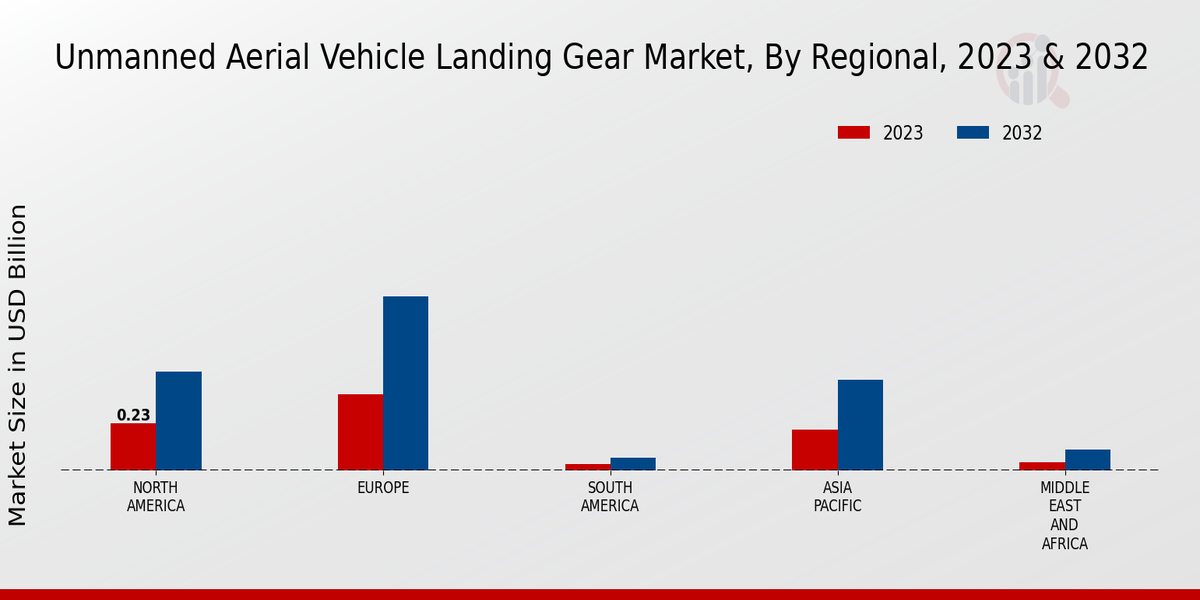Regulatory Support
The Global Unmanned Aerial Vehicle Landing Gear Market Industry benefits from favorable regulatory frameworks that promote UAV integration into national airspaces. Governments are establishing guidelines that facilitate the safe operation of drones, which in turn drives demand for reliable landing gear systems. For example, the Federal Aviation Administration in the United States has implemented regulations that encourage the use of UAVs for commercial purposes, leading to increased investments in landing gear technologies. This supportive regulatory environment is likely to enhance market growth, as manufacturers respond to the rising need for compliant and efficient landing gear solutions.
Commercial Sector Growth
The Global Unmanned Aerial Vehicle Landing Gear Market Industry is witnessing substantial growth in the commercial sector, driven by applications in agriculture, logistics, and infrastructure inspection. Companies are increasingly utilizing UAVs for crop monitoring, package delivery, and surveying, necessitating reliable landing gear systems that can support various payloads and operational requirements. For instance, agricultural drones equipped with advanced landing gear can operate in rugged terrains, enhancing their utility. This burgeoning commercial interest is anticipated to propel the market forward, with projections indicating a rise from 1.05 USD Billion in 2024 to 2.75 USD Billion by 2035, underscoring the potential of this sector.
Technological Advancements
The Global Unmanned Aerial Vehicle Landing Gear Market Industry is experiencing rapid technological advancements, particularly in materials and design. Innovations such as lightweight composite materials and retractable landing gear systems enhance performance and efficiency. For instance, the integration of smart landing gear systems that can adapt to various terrains is becoming more prevalent. These advancements not only improve the operational capabilities of UAVs but also contribute to weight reduction, which is crucial for extending flight durations. As a result, the market is projected to grow from 1.05 USD Billion in 2024 to 2.75 USD Billion by 2035, reflecting a robust demand for advanced landing gear solutions.
Environmental Considerations
The Global Unmanned Aerial Vehicle Landing Gear Market Industry is increasingly influenced by environmental considerations, as stakeholders seek sustainable solutions. The push for eco-friendly UAVs has led to the development of landing gear systems that minimize environmental impact, such as those made from recyclable materials. Additionally, the focus on reducing noise pollution during landing and takeoff is prompting innovations in landing gear design. As global awareness of environmental issues grows, manufacturers are likely to prioritize sustainability in their product offerings, thereby driving market growth and aligning with broader industry trends.
Increased Military Applications
The Global Unmanned Aerial Vehicle Landing Gear Market Industry is significantly driven by the increasing adoption of UAVs in military applications. Governments worldwide are investing heavily in drone technology for surveillance, reconnaissance, and combat missions. The need for reliable and durable landing gear systems is paramount in these scenarios, as they must withstand harsh conditions and ensure mission success. For example, military UAVs like the MQ-9 Reaper require specialized landing gear that can handle diverse environments. This growing military demand is expected to contribute to a compound annual growth rate of 9.14% from 2025 to 2035, further expanding the market.

























Leave a Comment